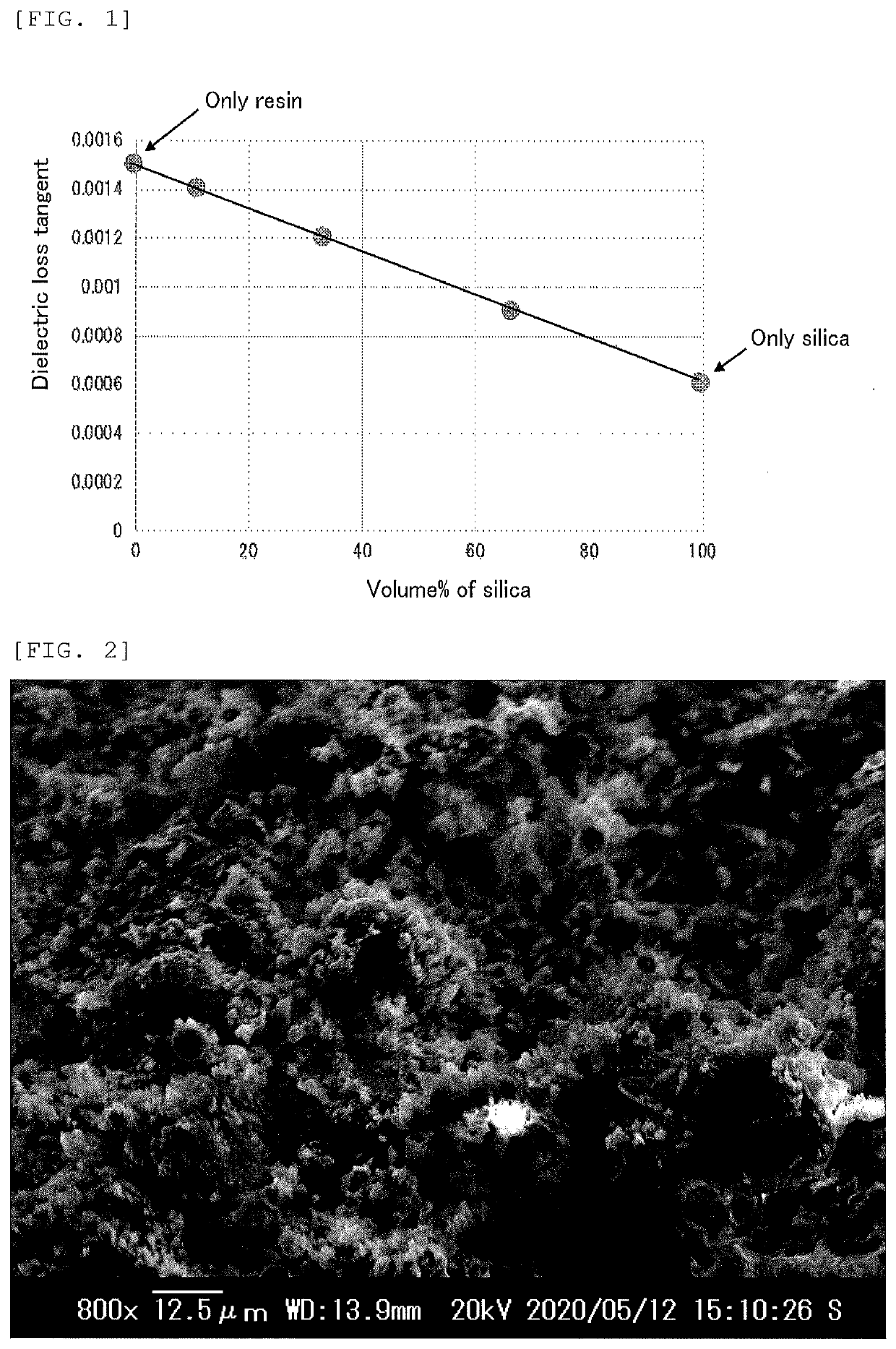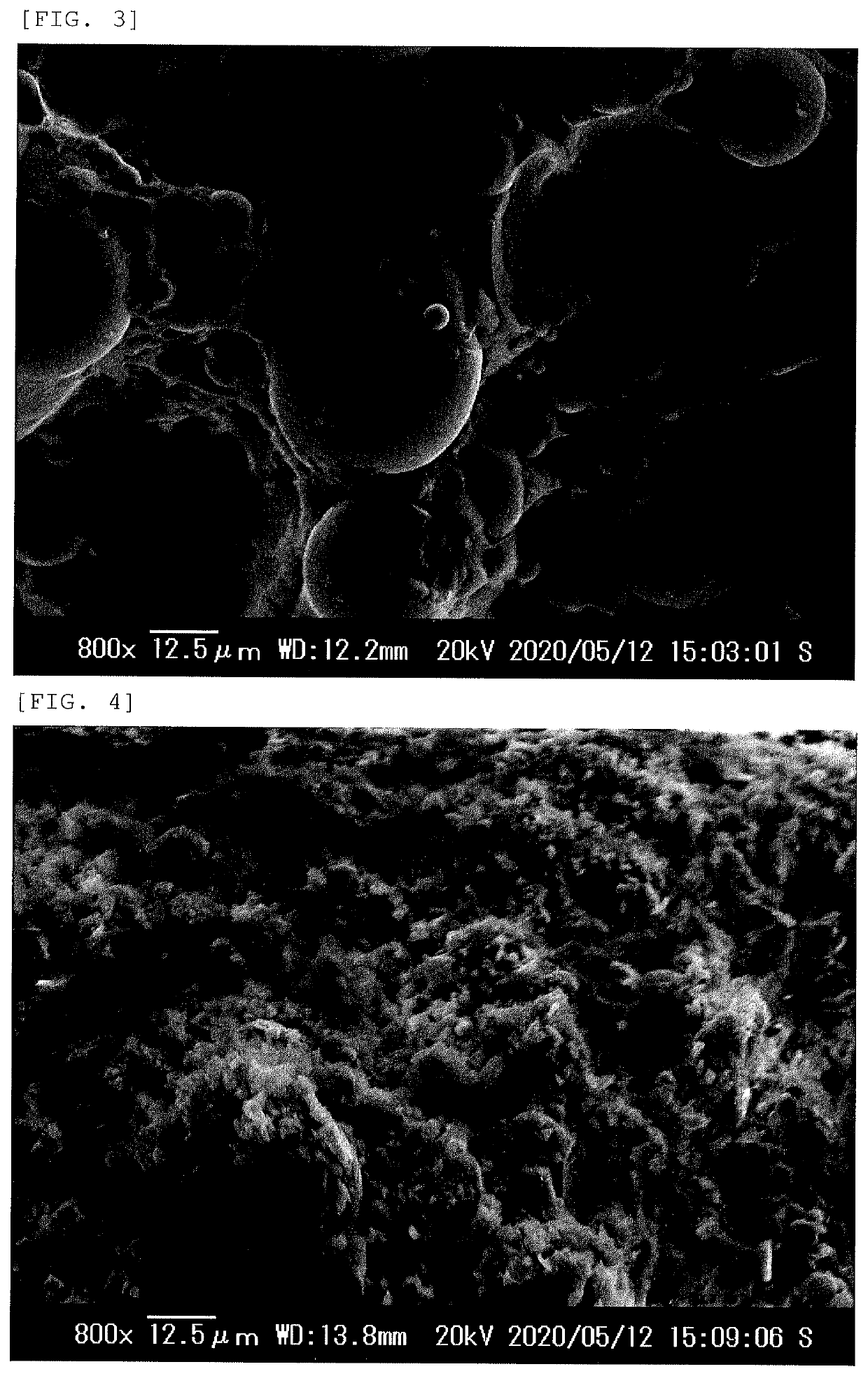Low dielectric silica powder, resin composition containing the silica powder, and method for manufacturing low dielectric silica powder
a technology of low dielectric silica and resin composition, which is applied in the direction of silica, pigmenting treatment, silicon oxides, etc., can solve the problems of large deformation, large deformation, and inability to find silica powder, and achieve and small dielectric loss tangent
- Summary
- Abstract
- Description
- Claims
- Application Information
AI Technical Summary
Benefits of technology
Problems solved by technology
Method used
Image
Examples
example
[0096]Hereinafter, the present invention will be specifically described with reference to Examples and Comparative Examples. However, the present invention is not limited thereto.
[0097]Note that in the present description, the values of the dielectric loss tangent and the hydroxy group content of the silica powder prepared in the Examples and Comparative Examples are values determined by the following methods.
[0098]A method for measuring dielectric loss tangent will be described with a silica powder A1 (RS8225, untreated product) as an example.
[0099]In the proportion shown in the following Table 1, the silica powder was mixed in an anisole solvent containing SLK-3000 (manufactured by Shin-Etsu Chemical Co., Ltd.), being a low dielectric maleimide resin and as a curing agent, dicumyl peroxide (Percumyl D manufactured by NOF Corporation), being a radical polymerization initiator. This was dispersed and dissolved to prepare a varnish.
[0100]The silica powder was added so as to be 0%, 11...
example 1
[0115]5 Kg of a silica powder A1 (RS8225 manufactured by Tatsumori Ltd.) with an average particle size of 15 μm, a dielectric loss tangent of 0.0006, and a hydroxy group content of 370 ppm was placed in an alumina container and heated in a muffle furnace (manufactured by AS ONE Corporation) in air at 900° C. for 5 hours, and then cooled to room temperature over 6 hours. The silica powder after the heat treatment was placed in a plastic container containing 20 liters of alkaline electrolyzed water with a pH of 13 and stirred for 2 hours while heating to 60° C. in order to remove a strained layer on the particle surface. Subsequently, the silica powder was separated with a centrifugal separator, then washed with methanol and dried. The dried silica powder was disintegrated with a ball mill, and coarse particles were eliminated with a 150-mesh sieve. The resulting silica powder LK-1 had a reduced hydroxy group content of 270 ppm, and the dielectric loss tangent was 0.0002.
example 2
[0116]5 Kg of a silica powder B (SO-E5 manufactured by ADMATECHS) with an average particle size of 1.5 μm, a dielectric loss tangent of 0.0011, and a hydroxy group content of 290 ppm was placed in an alumina container and heated in a muffle furnace (manufactured by AS ONE Corporation) in air at 900° C. for 12 hours, and then cooled to room temperature over 6 hours. The silica powder after the heat treatment was placed in a plastic container containing 20 liters of alkaline electrolyzed water with a pH of 13 and stirred for 2 hours while heating to 60° C. in order to remove a strained layer on the particle surface. Subsequently, the silica powder was separated with a centrifugal separator, then washed with methanol and dried to obtain a silica powder LK-2. This silica powder had a dielectric loss tangent of 0.0003 and a hydroxy group content of 240 ppm.
PUM
| Property | Measurement | Unit |
|---|---|---|
| particle size | aaaaa | aaaaa |
| particle size | aaaaa | aaaaa |
| temperature | aaaaa | aaaaa |
Abstract
Description
Claims
Application Information
 Login to View More
Login to View More - R&D
- Intellectual Property
- Life Sciences
- Materials
- Tech Scout
- Unparalleled Data Quality
- Higher Quality Content
- 60% Fewer Hallucinations
Browse by: Latest US Patents, China's latest patents, Technical Efficacy Thesaurus, Application Domain, Technology Topic, Popular Technical Reports.
© 2025 PatSnap. All rights reserved.Legal|Privacy policy|Modern Slavery Act Transparency Statement|Sitemap|About US| Contact US: help@patsnap.com


